In China's Industrial Centers, Lung Disease and Hard Choices (original) (raw)
On any given day at the First Hospital of Hebei Medical University in Shijiazhuang, an industrial city roughly 200 miles south of Beijing in northwestern China, a wall of ailing patients can be found tethered to breathing machines. In many cases, they are there after years of smoking. But when asked, most will also recall decades of breathing other noxious stuff: thick smog, combustion dust, and other contaminants churned into the air by the region’s vast panorama of industry.
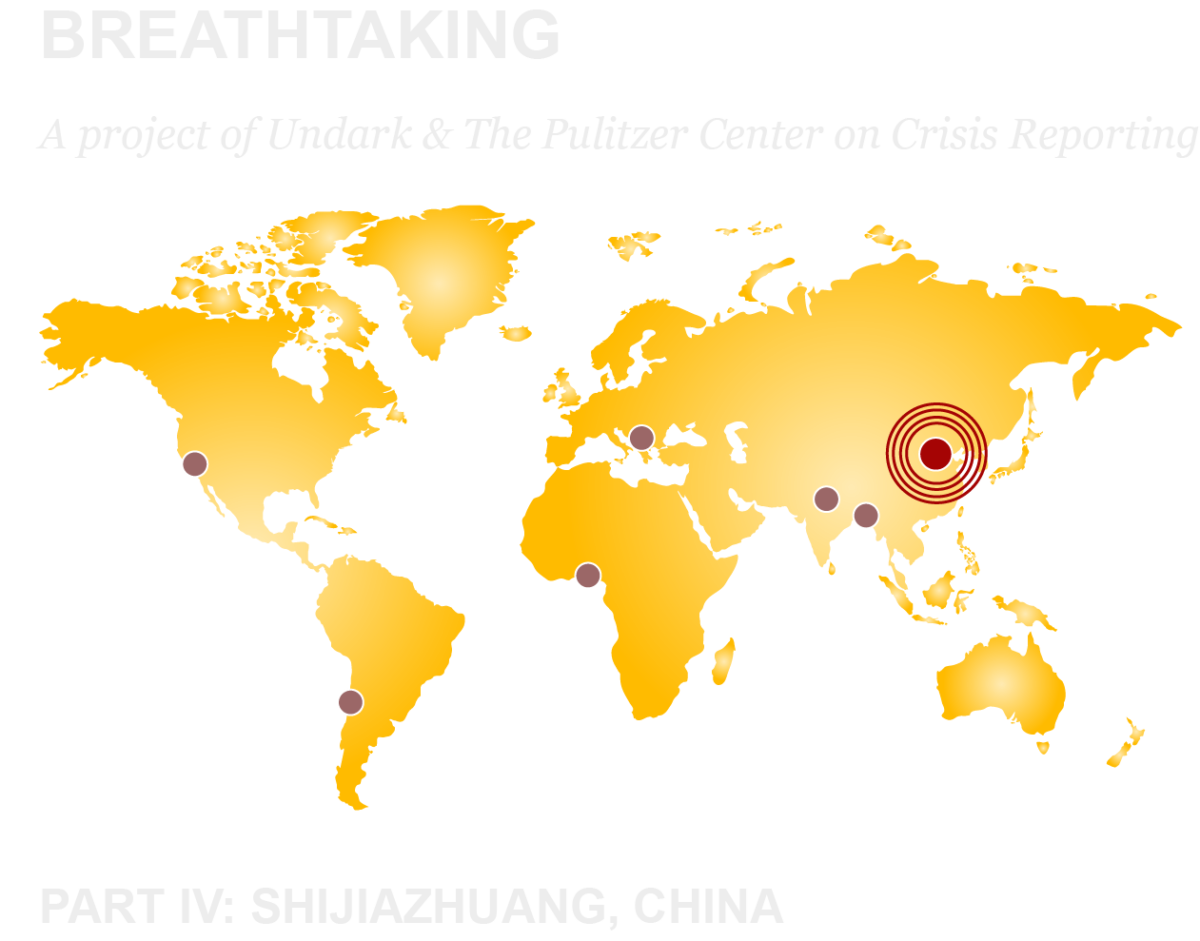
Liu Wenzhi, a grocer who now suffers from chronic obstructive pulmonary disease, or COPD, recalled clouds of fine white powder from nearby ceramic and cement factories. They swirled constantly above his vegetable stand in Handan, he said, and he tried not to look up at the sky, to avoid getting dust in his eyes and his mouth. Li Baozhi, a fellow COPD patient, worked in power plant construction, where dust and, later, soot would be regular byproducts.
It’s a potent cocktail, and in April, a group of four-dozen Chinese doctors and researchers confirmed what these men, their doctors, and surely millions of modern Chinese citizens already knew: Just like smoking, long-term exposure to high concentrations of PM2.5 pollution — microscopic, airborne particles 2.5 micrometers or less in diameter — significantly increases the risk of COPD. The epidemiological study of more than 50,000 people across the nation, published in The Lancet, noted in particular that annual mean exposure to levels of PM2.5 greater than 50 micrograms per cubic meter of air — a common condition in many Chinese cities — was associated with a significantly higher rate of COPD even among people who never smoked.
Patients like these face difficult choices. On the one hand, they have been told to stay indoors to avoid inhaling pollutants that can worsen their COPD. And yet, they must venture outside in order to access treatments they hope will prolong their lives. In this way, they are not so different from their fast-growing country, which also faces excruciating either-or choices as it tries to balance economic growth with the need to clean up its spectacularly dirty air. China’s leadership is now working diligently to navigate the myriad trade-offs — sometimes with a brutal efficiency.
“You have to pay attention to two weather conditions: One is gale, high wind, which brings heavy dust. The other is a cold day with ‘big fog,’” said Li Fengchen, a farmer and another COPD sufferer. “I will not walk outside on those days.”
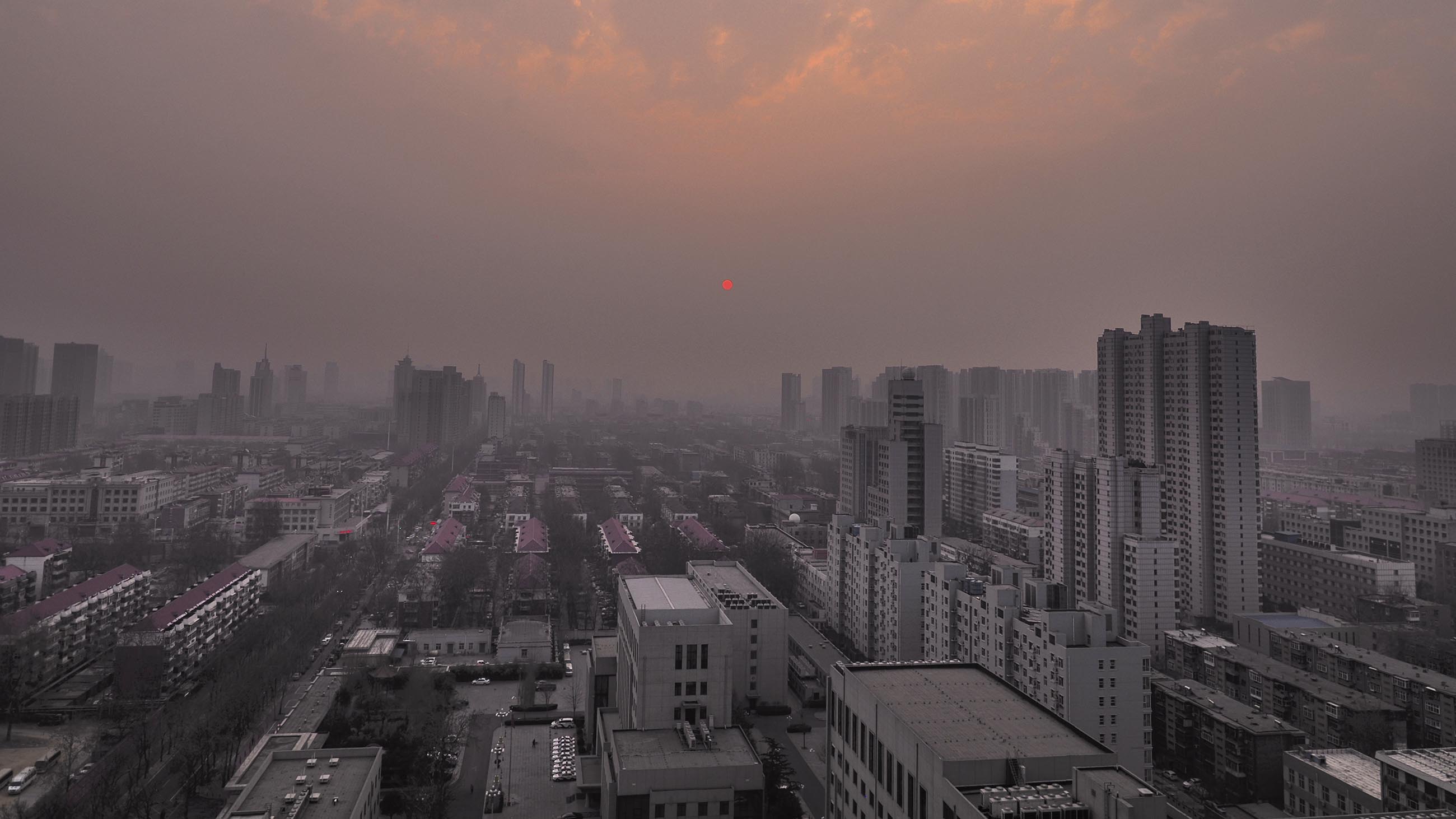
A spring sunrise barely pierces a thick layer of pollution over Shijiazhuang.
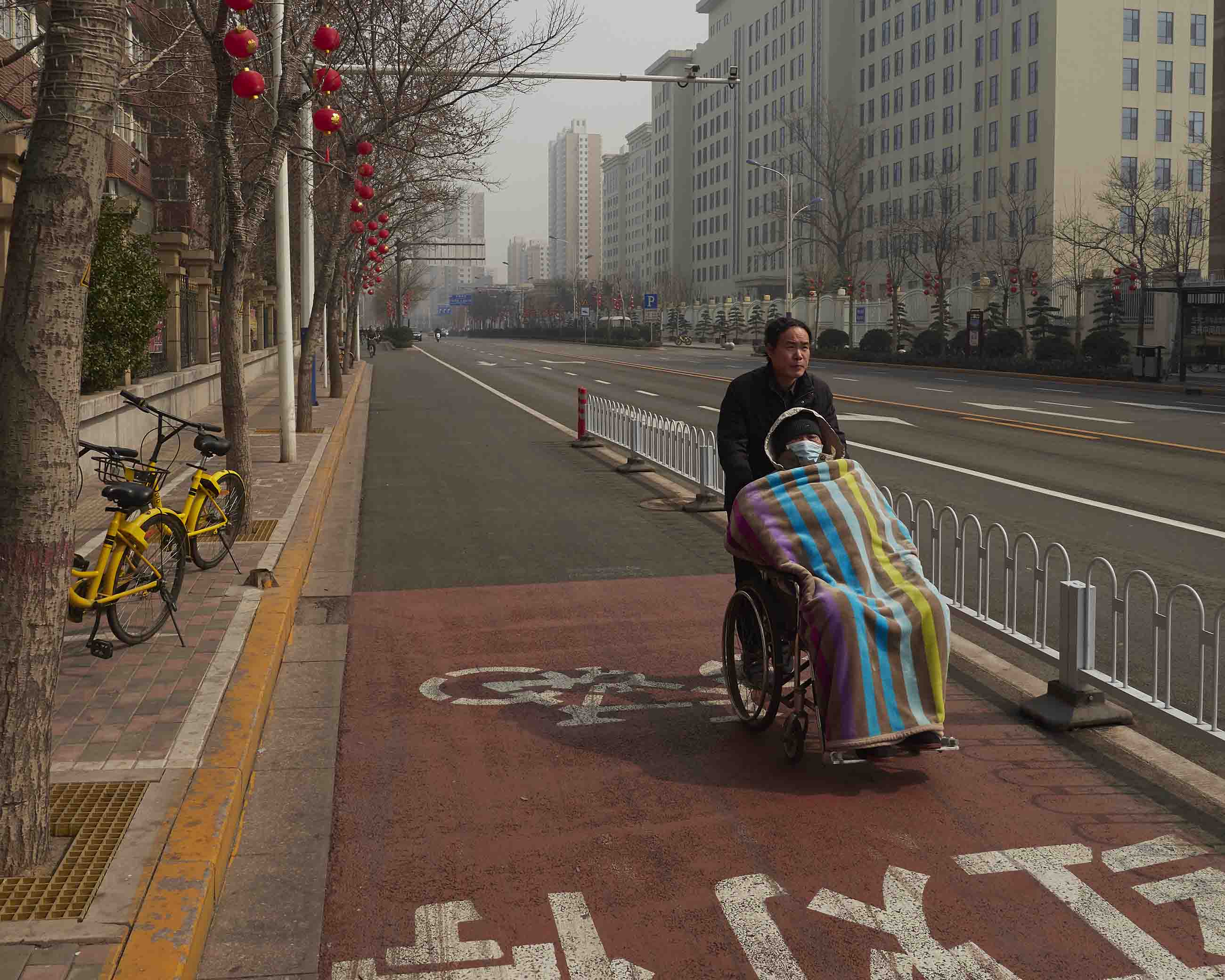
Hazardous air pollution levels are commonplace in a region surrounded by power plants, oil refineries, pharmaceutical factories, and iron and steel mills.
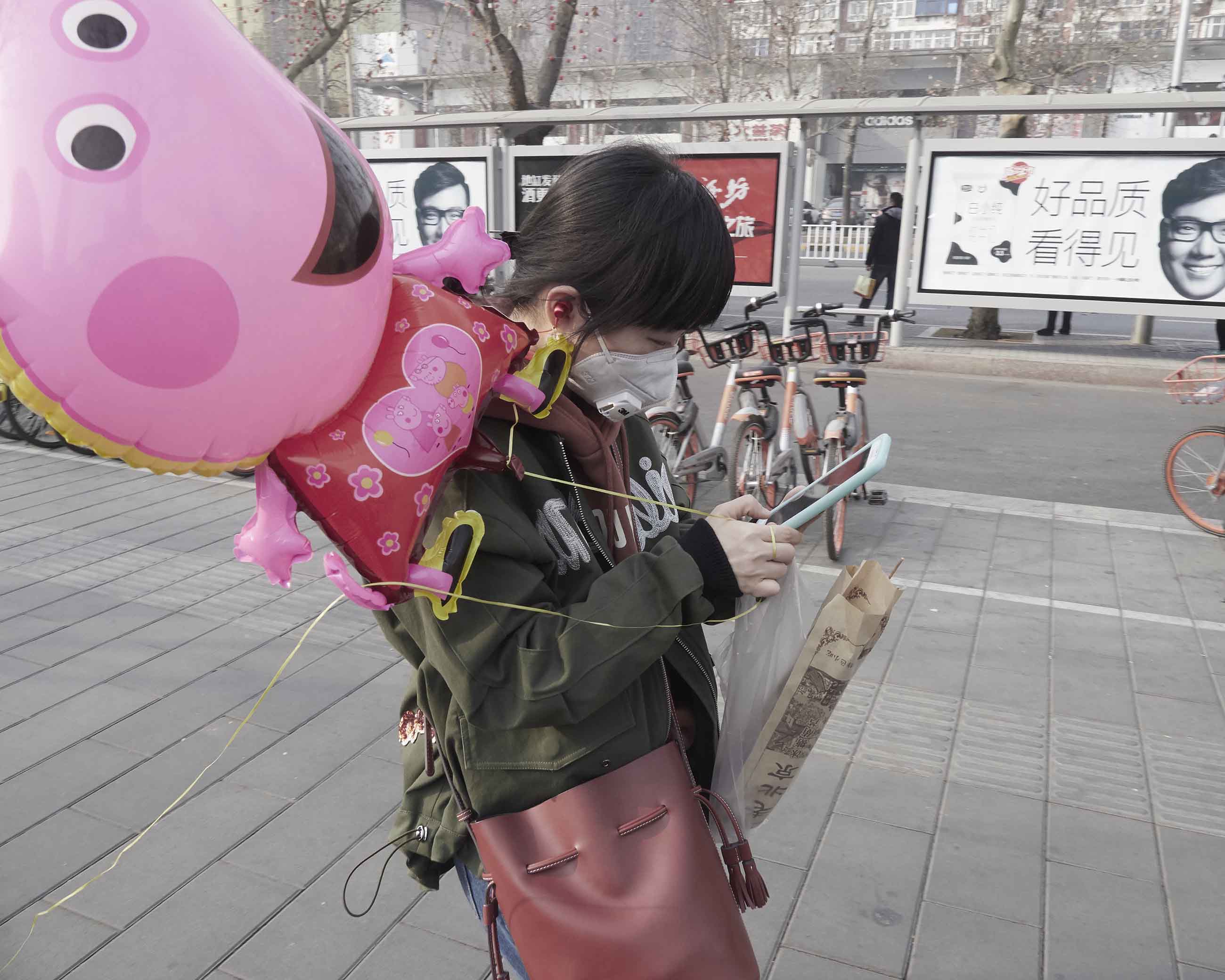
The acrid smell of combustion is commonplace, and air pollution is simply a part of everyday life.
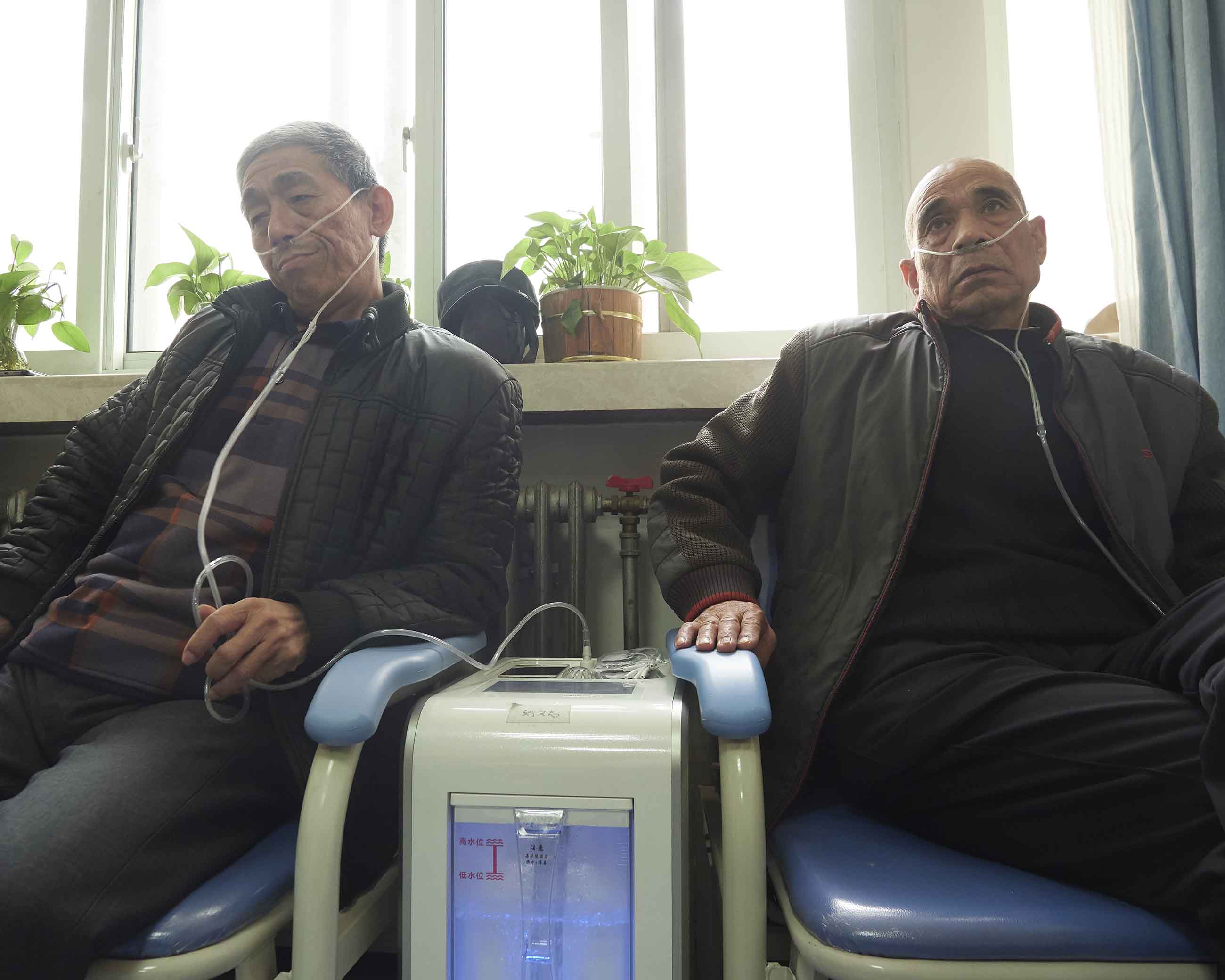
At the First Hospital of Hebei Medical University in Shijiazhuang, patients suffering from a variety of respiratory illnesses line the walls.
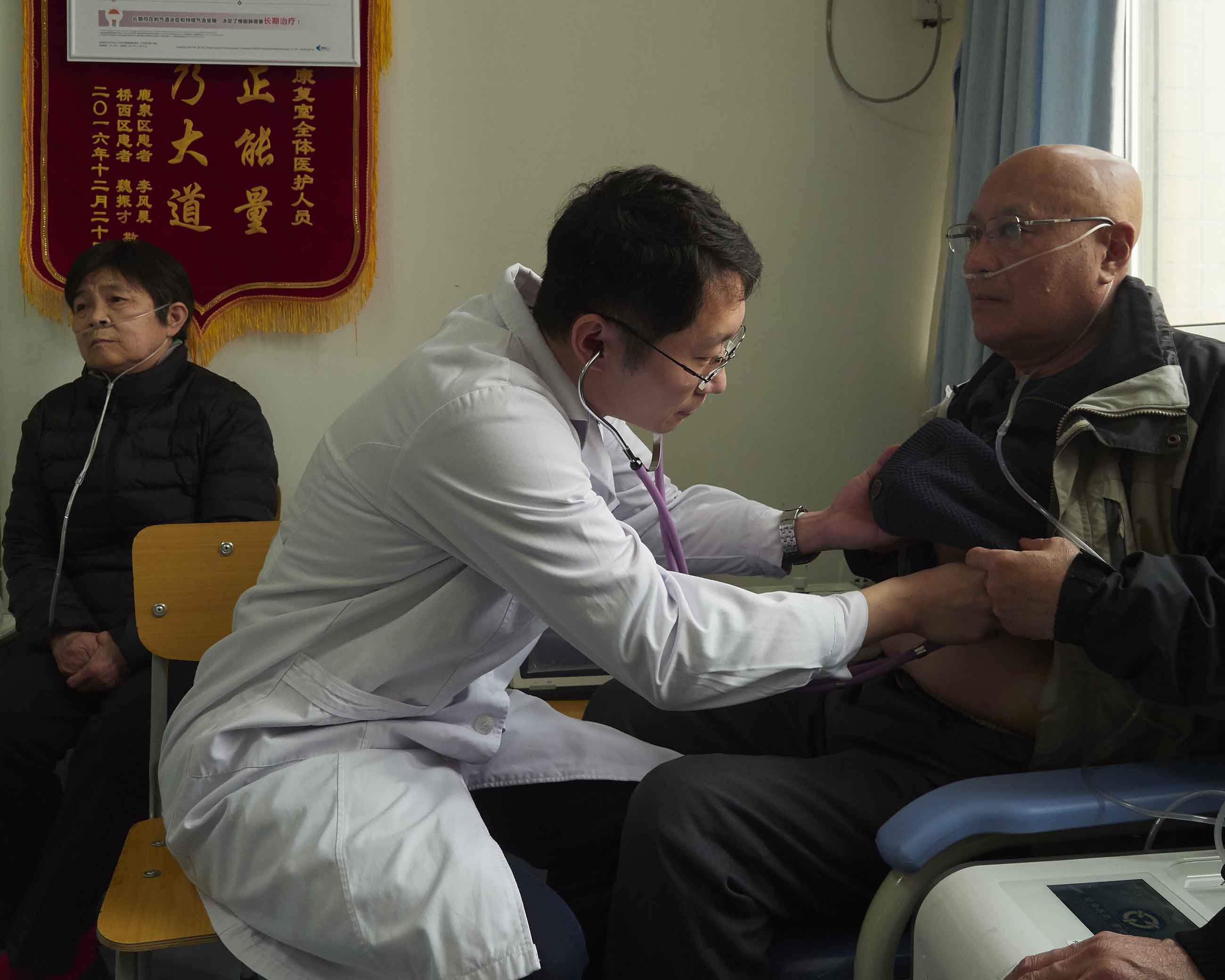
Dr. Pengyu Wang, a respiratory medicine specialist, listens to the breathing of Li Baozhi, 67, who suffers from chronic obstructive pulmonary disease, or COPD.
During a six-day run of heavy smog in March, the smell of burning carbon hung in the morning air over Shijiazhuang, as a thick haze obscured the rising sun and commuters wearing masks zipped along on electric scooters. At Green Hebei, the province’s first nonprofit organization focused on pollution mitigation, an air quality monitor measuring several types of pollutants, including PM2.5, showed a value of 195 — considered flatly unhealthy by global health authorities.
That’s a matter of potent concern for Li Fei, director general of Green Hebei, whose son was born in 2014. “Kids do not have the power to choose where they were born, but they are exposed to air pollution since birth,” Li said. “They have no ability to make a voice or change. At this time, as parents, we are actually capable and need to do something.”
Five out of the top 25 most polluted cities on the World Health Organization’s 2016 list are in Hebei Province, including its capital city, Shijiazhuang, which ranked 14th. The northern province, which wraps around Beijing and Tianjin, is a major center for manufacturing, steel production, metals smelting, and heavy industry, most of which is powered by burning coal. In a country that is the world’s largest coal consumer, Hebei Province stands out, burning 23 percent more coal than the national average in 2015. That year, coal accounted for 86.6 percent of Hebei’s energy use — a singular fact that underscores the difficulty that China faces as it seeks to nurture its economy while transitioning to cleaner, greener energy sources.
PERSISTENTLY UNHEALTHY Hebei Province is home to five out of the top 25 most polluted cities in the World Health Organization’s 2016 rankings. This includes its capital city, Shijiazhuang, which lives under a constant haze of particulate pollution, as evidenced by the chart below. Data, taken from a single monitoring station in Shijiazhuang, is from March 2017 to July 2018.
INTERACTIVE CHART Click, drag, or resize the box at the bottom of the chart above to zoom in or out on the data, and to change the timespan covered. Hover over individual data points to see the average one-hour PM2.5 levels at that date and time. (Note: Gaps in data indicate that no reading was taken.)
As it stands, China’s most recent five-year plan calls for the country to double 2010 GDP and per capita incomes by 2020, in part by growing the service economy. At the same time, the country’s 2013 environmental action plan called for reducing PM2.5 concentrations by 25 percent in the Beijing-Tianjin-Hebei region — a goal that was achieved earlier this year. In July the government announced a new pollution action plan that mandates, among other things, a 10 percent cut in coal consumption from 2015 levels by 2020 in Hebei, Beijing, Tianjin, Shandong, and Henan.
Reducing coal consumption inherently requires shutting down factories and power plants, at least temporarily, to upgrade emissions controls and install new technologies. Additionally, Hebei, the nation’s largest steel-producing region, announced in August it was cutting capacity by more than 30 percent from 2013’s 315 million tons to 220 million tons by 2020, ostensibly to reduce particulate pollution, though it also coincides with new steel tariffs imposed by the United States.
Either way, the competing objectives draw into sharp focus China’s central conundrum: how to bring air pollution indices down while keeping factory production up.
“We want blue sky,” said one woman who asked that her name not be used for fear that her comments could jeopardize her son’s and husband’s work in Hebei’s Jingxing Mining District, “and we do want jobs, too.”
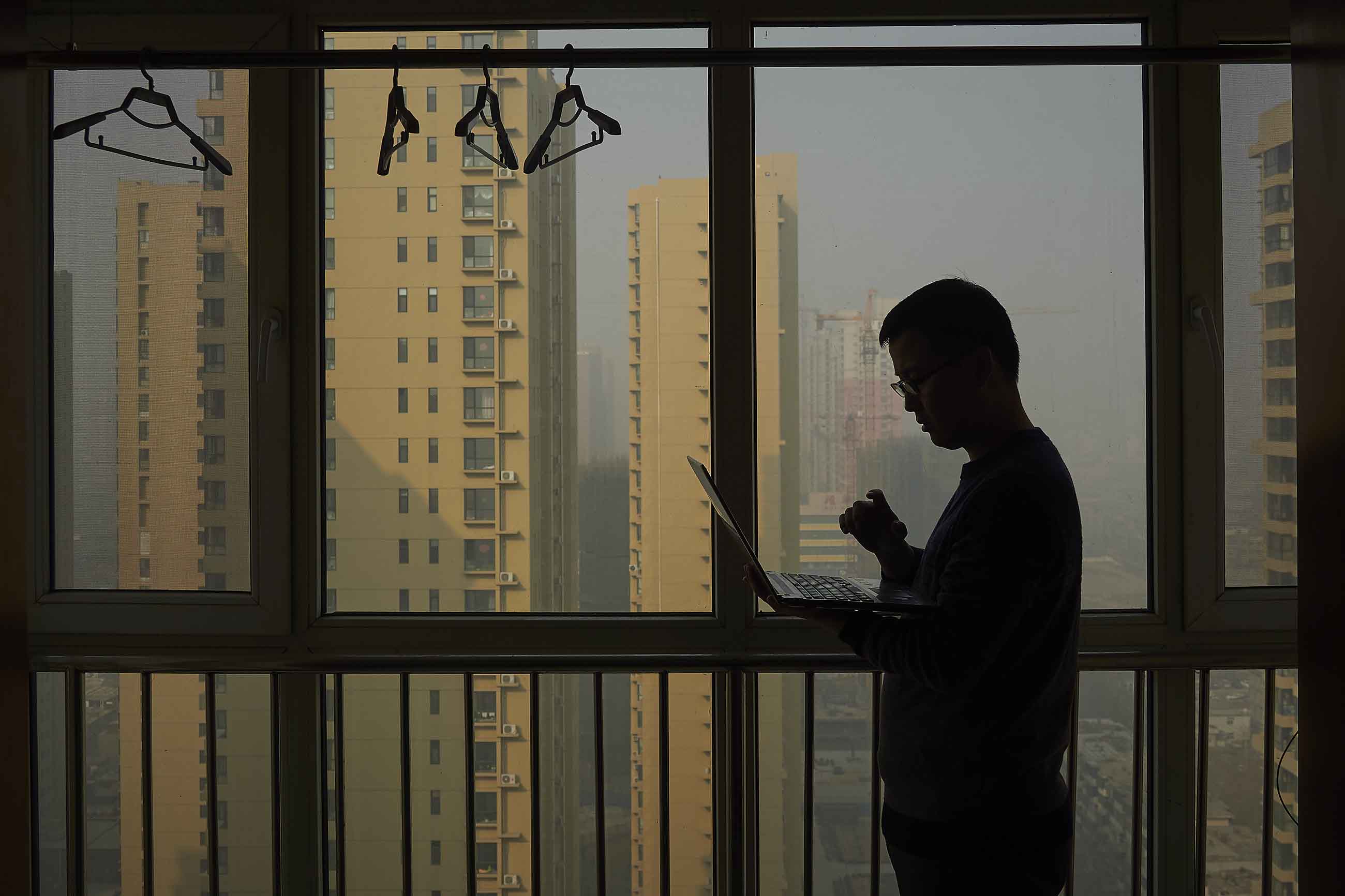
Li Fei is the director general of Green Hebei, the province’s first nonprofit organization focused on pollution mitigation. “Kids do not have the power to choose where they were born,” he said. “but they are exposed to air pollution since birth.”
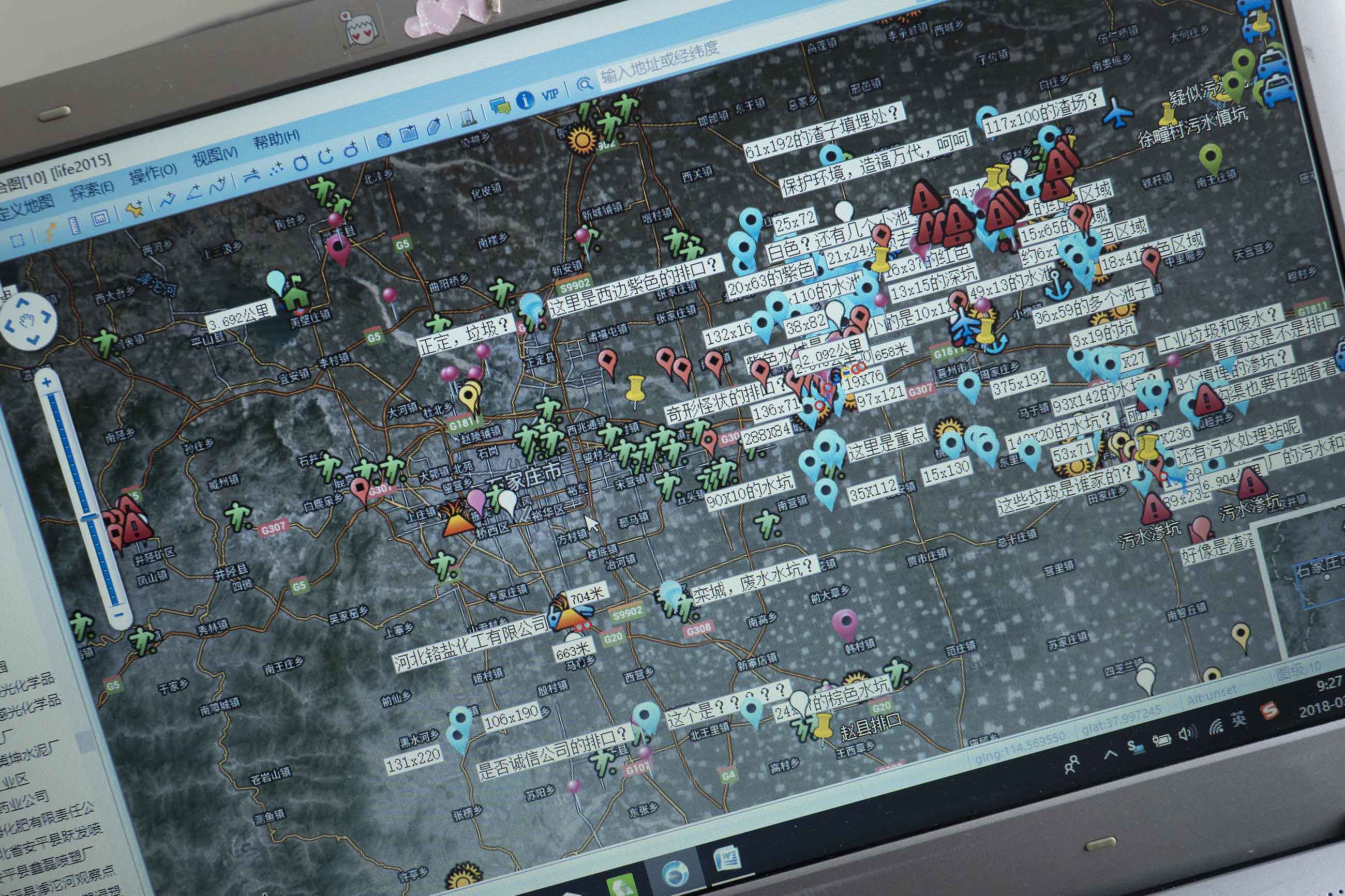
The group works out of a small apartment in the Qiaoxi District in Shijiazhuang. Here, a PC screen details real-time pollution readings across the city and region.
A local saying suggests that Shijiazhuang is a city pulled by trains. Situated roughly an hour from Beijing on the high-speed rail, Shijiazhuang has been a major transportation hub since the early 20th century, with the rails bringing industry into the city and carrying goods from it. Thermal power plants, oil refineries, pharmaceutical factories, cotton mills, equipment manufacturing, textiles, clothing, iron and steel mills, and food industries, just to name a few, burgeoned here.
By 2013, according to China’s own environment ministry, Shijiazhuang had the worst air quality of China’s 11 provincial capitals with high levels of PM2.5 coming from such sources as coal combustion (28.5 percent), industrial production (25.2 percent), dust (22.5 percent), and vehicle exhaust (15 percent).
The local government responded with an ambitious — some say iron-fisted — campaign to reduce particulate pollution, inspecting, fining, and periodically shutting down factories. Annual average PM2.5 readings in Shijiazhuang decreased from a staggering 156 micrograms per cubic meter of air in 2013 to 86 micrograms per cubic meter in 2017 — a laudable 44 percent decline, but still more than eight times the World Health Organization’s target level of 10 micrograms per cubic meter.
When PM2.5 indicators spiked to 109 micrograms per cubic meter in March of this year — giving Shijiazhuang once again the dubious distinction of “most polluted” out of 74 Chinese cities — local officials struck back with a 44-point action plan that gave factories, chemical and coking plants, and even crematoriums only six months to install mandated emissions controls. Fireworks have also been banned during the Chinese New Year Festival.
Such abrupt, even draconian, edicts are common across China. In 2017, authorities ordered residents of Beijing, Shijiazhuang, Tianjin, and almost two dozen other northern cities to stop using coal stoves to heat their homes. With natural gas in short supply, countless thousands had no heat at all, leading to protests and, ultimately, a reversal of the government’s order.
China began monitoring PM2.5, along with other air pollution indicators, with six stations in Beijing in 2000, and in the years following the 2008 Beijing Olympic Games, which put the city’s noxious air on an international stage, the country has made significant progress improving air quality in the capital city. Those efforts were redoubled in 2011, after news highlighting discrepancies between official government smog reports and readings of PM2.5 published by the U.S. Embassy in Beijing went viral on Sina Weibo, the wildly popular local alternative to Twitter. Concerns about PM2.5 became widespread among the general public, and soon after, China incorporated PM2.5 concentrations into its air quality standards.
But even as Beijing focused on improving its air quality — with noted success — dozens of factories and industrial projects moved from the nation’s capital to Hebei Province, dodging, at least for a time, intense scrutiny and stricter regulations. Now the heat is on in parts of Hebei, as well, where factory operators play a high-stakes game of cat and mouse with government inspectors.
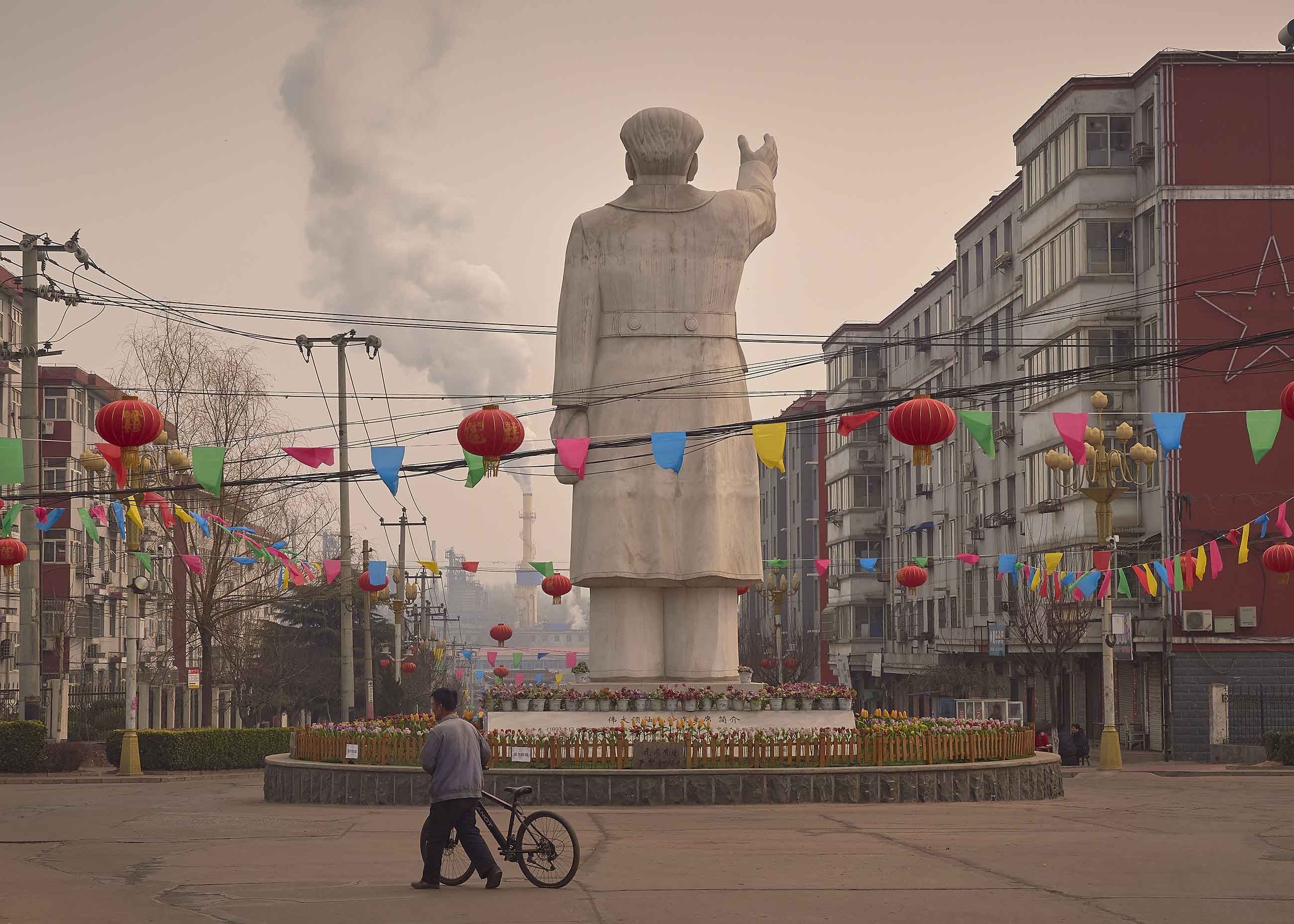
Businesses operating in the Jingxing Mining District of Hebei Province, as in many areas of China, have been under pressure by the central government to clean up emissions.
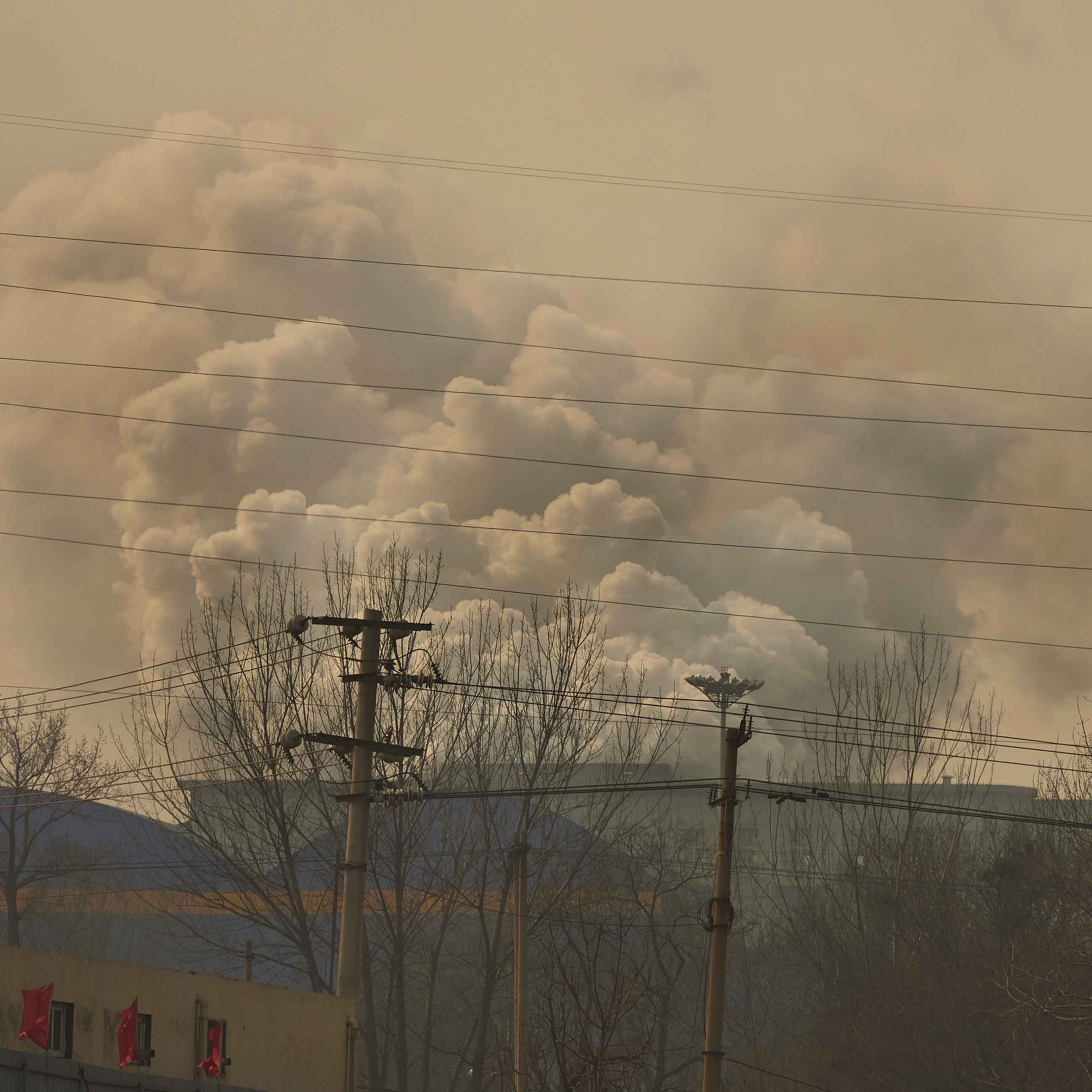
The local government responded with an ambitious — some say iron-fisted — campaign to reduce particulate pollution, inspecting, fining, and periodically shutting down factories.
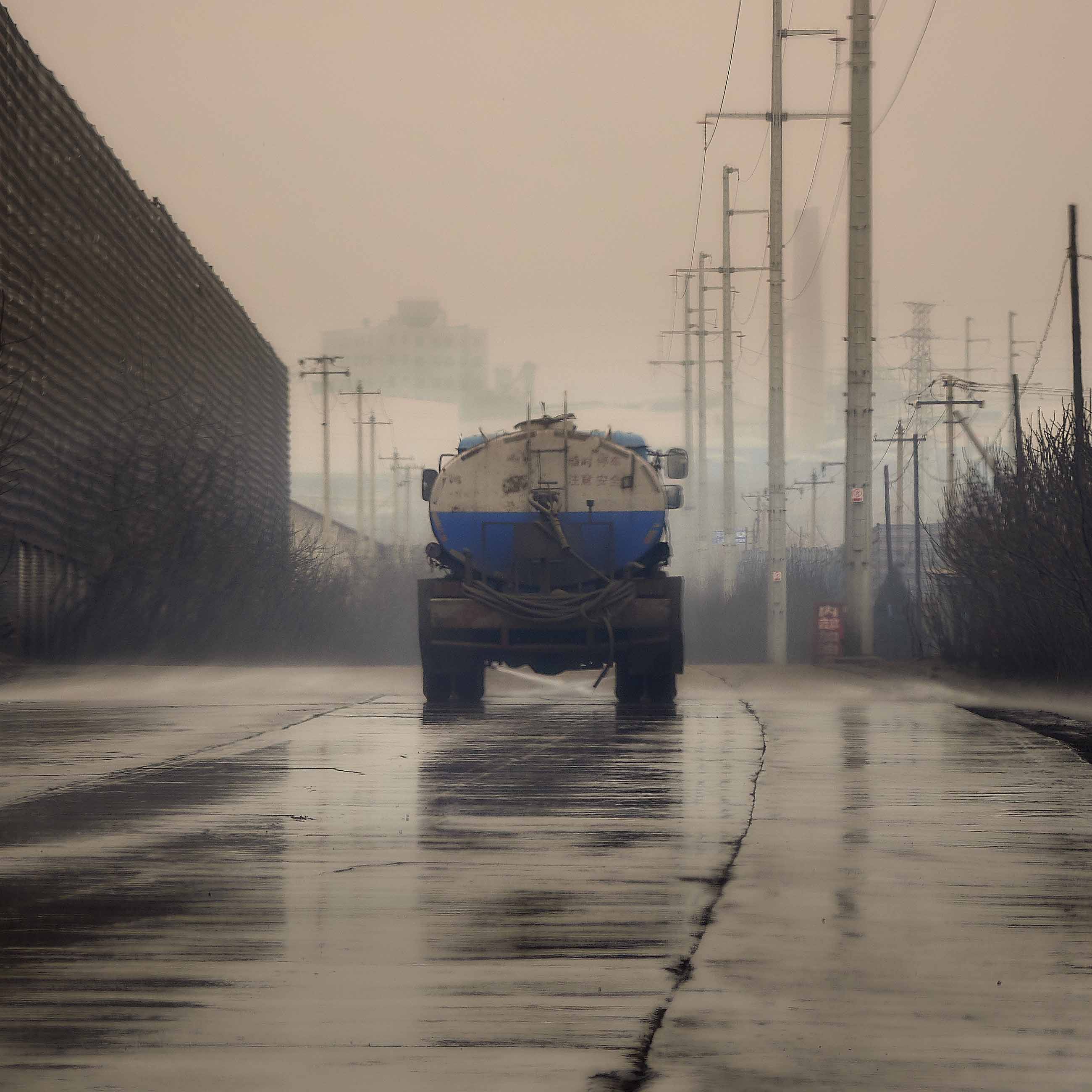
In response, factory operators play a high stakes game of cat and mouse with government inspectors in an attempt to avoid fines — or worse.
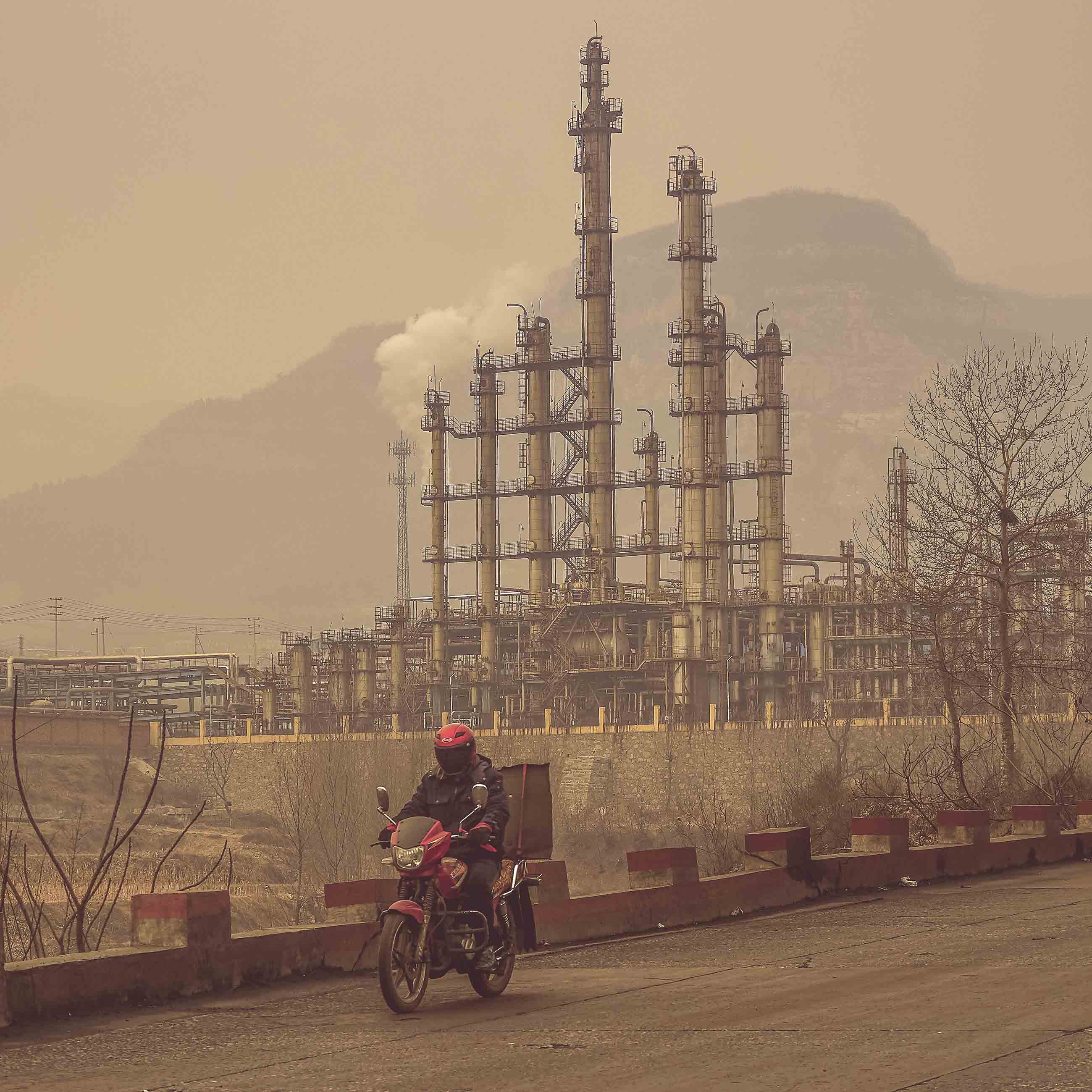
“We want blue sky,” said one woman who asked that her name not be used to protect her son’s and husband’s jobs, “and we do want jobs, too.”
Factory guards watch for government inspectors, with the goal of tipping off their higher-ups in time to throttle back operations and reduce emissions. Inspectors who do catch violators levy fines and occasionally even jail representatives of the offending factories. Government websites publish the names of offenders and their penalties, which can run into the hundreds of thousands of dollars. Those punished recently include the downtown Shijiazhuang operations of the venerable Shijiazhuang Iron and Steel Company, and North China Pharmaceutical Group, each fined $30,000 for violating the Law on the Prevention and Control of Atmospheric Pollution of China.
(While reporting this story, Undark journalists witnessed firsthand the extraordinary efforts that factories will take to eliminate a threat. The journalists were first harassed in the Jingxing Mining District by an unidentified man who attempted to take the photographer’s camera while he was shooting pictures of a chemical factory from a distant vantage point on a public street. The man, who was later joined by others, continued to shadow the journalists during their time in Jingxing, following their car for more than two hours and 40 miles back to Shijiazhuang. The chemical factory, meanwhile was among four fined $350,000 each in June for multiple violations, according to the official website of Shijiazhuang government.)
“Factories are wary of unidentified people,” said Zhang Gang, a Shijiazhuang environmentalist with Green Hebei. “They even hire people to stare at suspicious people, not just for fear of media exposure, but for fear of inspections from the ministry of environment.”
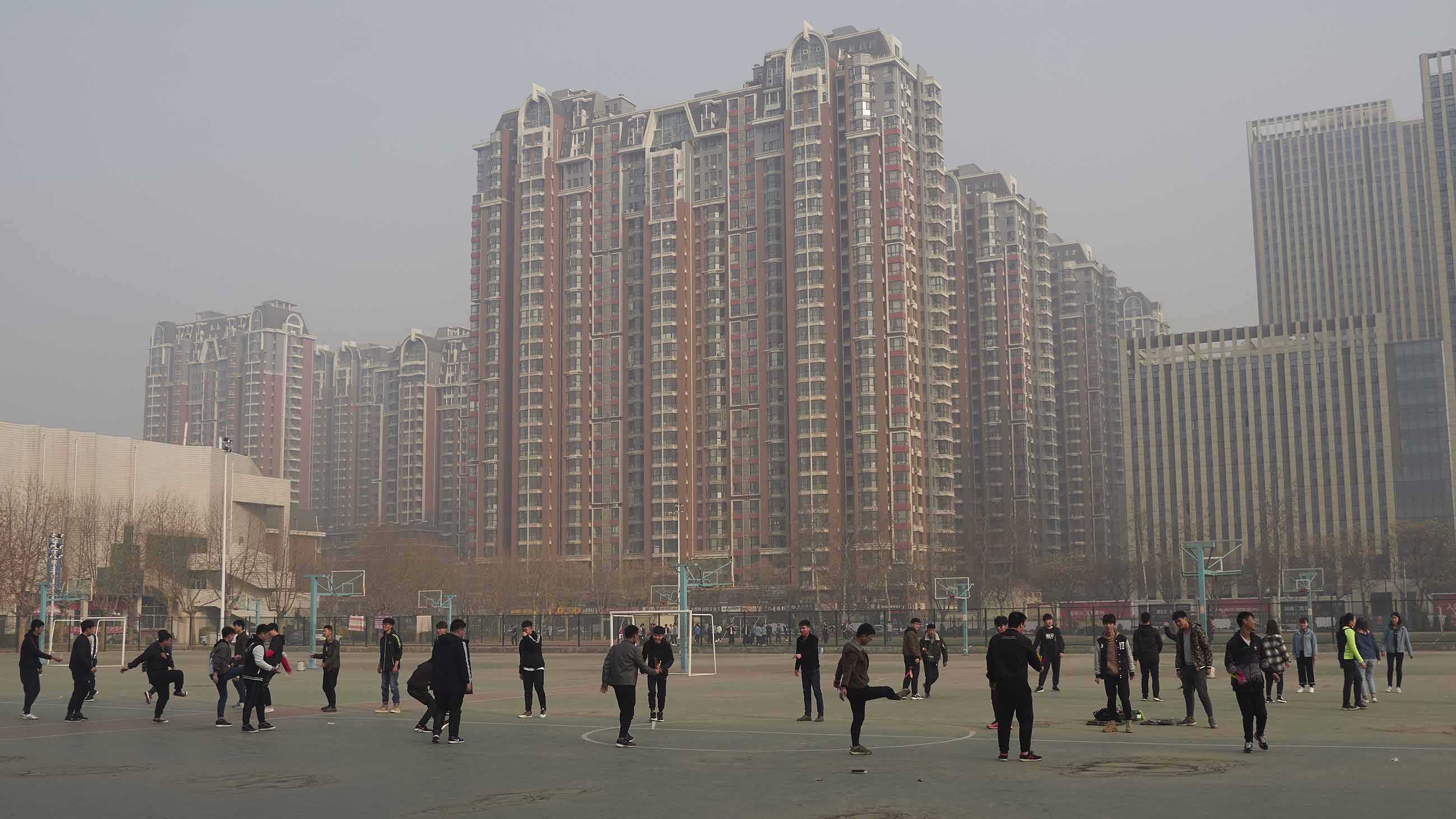
Students do morning exercises under polluted skies last spring at the Hebei Jiaotong Vocational and Technical College in Shijiazhuang.
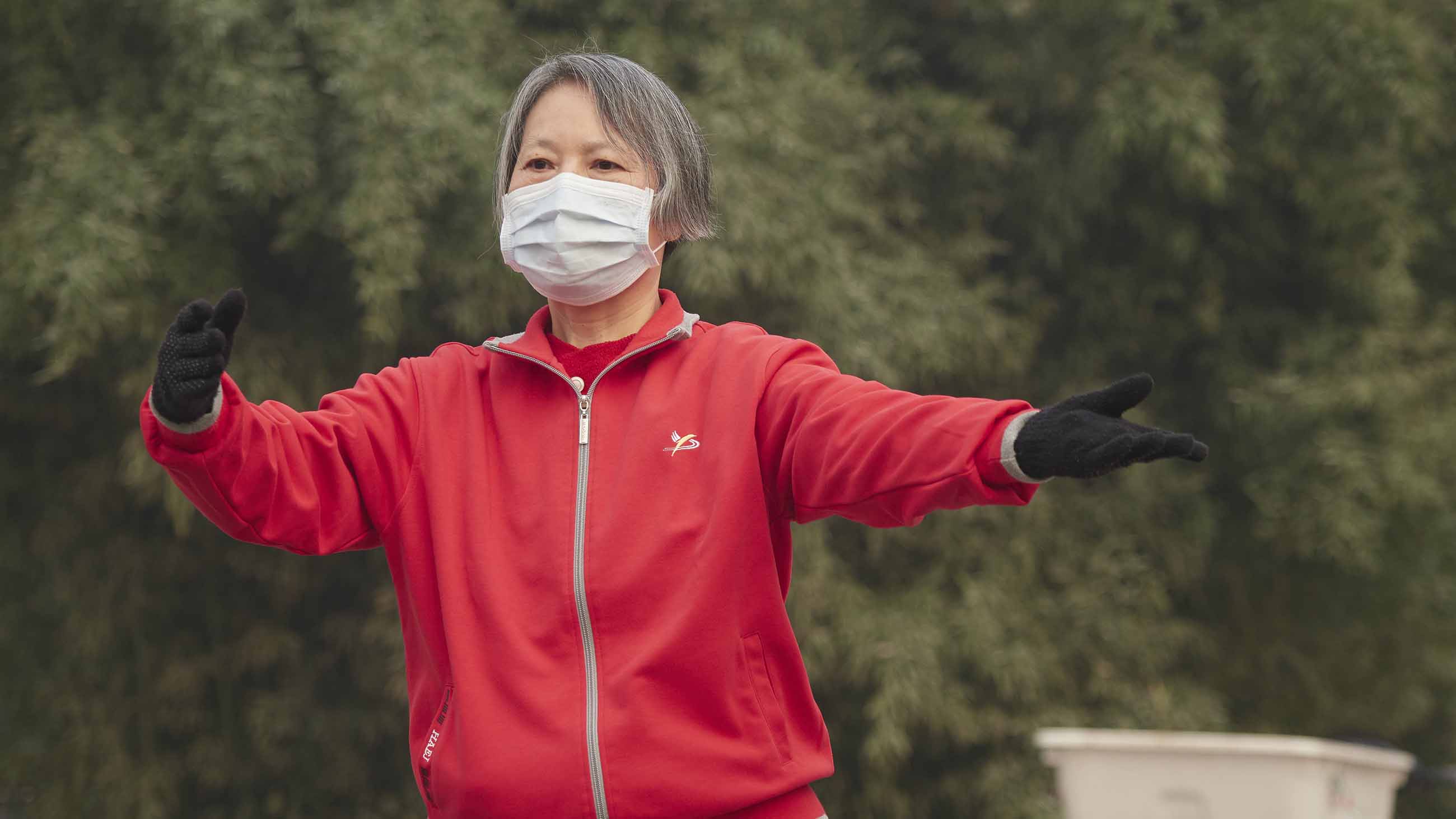
A woman goes through her morning Tai Chi routine in Shijiazhuang’s Ping An Park — exercising her body while trying to protect her lungs.
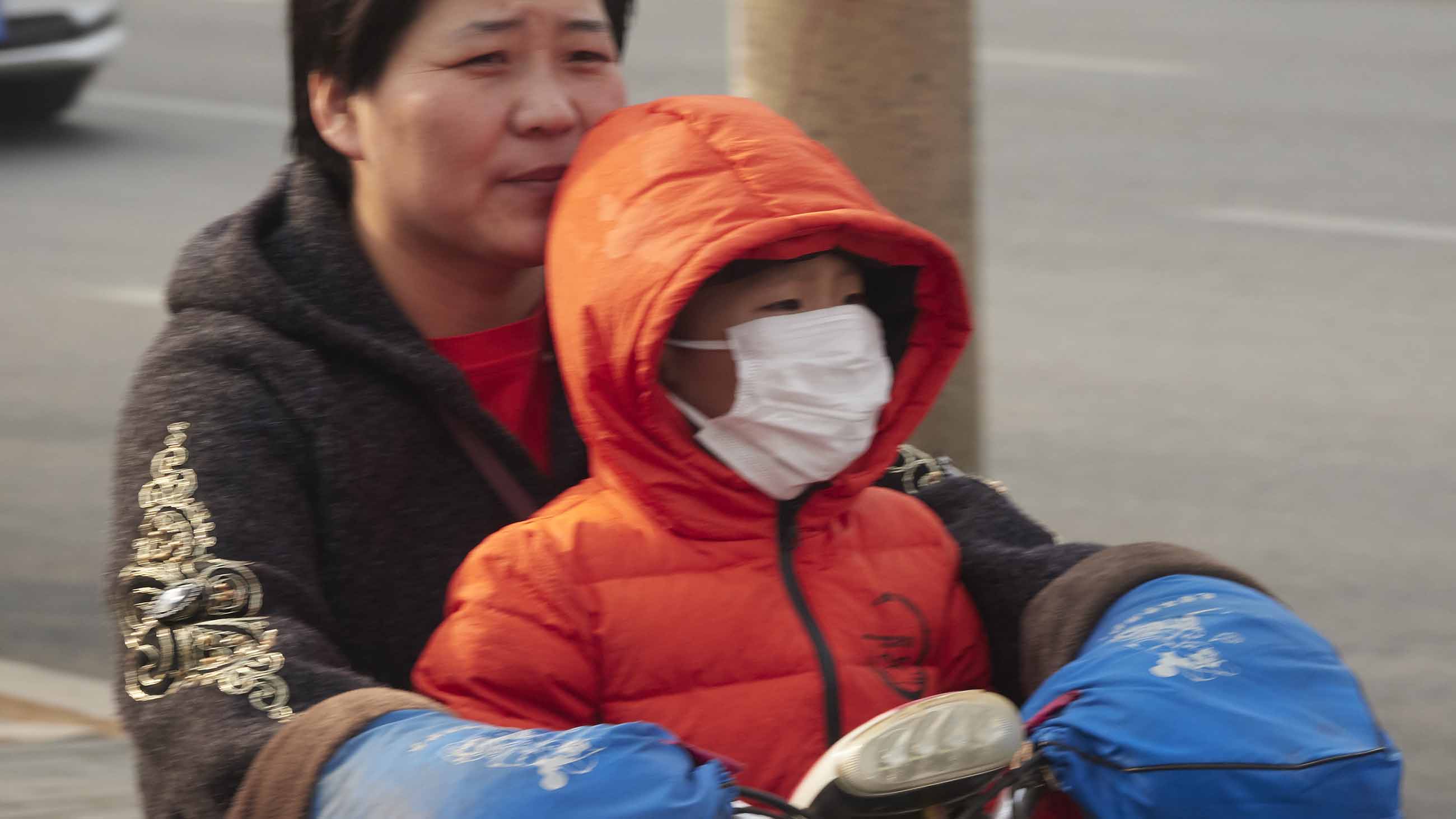
China has made real strides in clearing the air in some regions. But it still faces difficult either-or choices as it tries to balance economic growth and the pollution that comes with it.
Even on days when the air quality hits unhealthy levels, Shijiazhuang’s manicured parks are full of people. Apartments generally are small and cramped and the cherished green space offers a respite and a place to exercise, socialize, and get air — fresh or not. In Ping An Park, a group of elderly men and women executed Tai Chi moves with grace and precision.
Meanwhile, at the Hebei Medical University lung clinic, the men talked of their own exercises. They could do several simple movements for 30 minutes each time with the guidance of the doctor, and sometimes walked around for a while.
They also talked of their fears of the constant ache in their chests, of the cold winter that always makes them ill, of the constant red light on the air purifier that implied bad air. And with an optimism that belied the day’s evident pollution, they professed their hope that the air is, indeed, becoming cleaner.
“The air is now much better than before,” Li Fengchen said. “Those days were much worse.”
Xiaoxue Chen is a Beijing-based writer and editor covering a variety of science-based topics, from human evolution and archaeology to bioscience and the environment — mostly for The Intellectual, a leading Chinese science publication.
UPDATE: A photo caption in an earlier version of this story incorrectly identified a doctor at First Hospital of Hebei Medical University in Shijiazhuang. He is Dr. Pengyu Wang, not Dr. Zhu Li. Captions on two other photos incorrectly made reference to Hebei Agricultural University. The images were taken at or near Hebei Jiaotong Vocational and Technical College.
READ THE COMPLETE SERIES
India, Bangladesh, China, Nigeria, Chile, United States, Macedonia